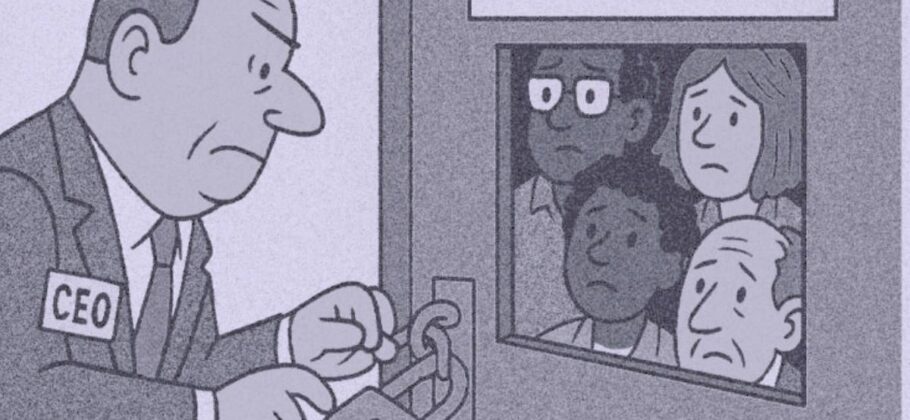What Employee Hoarding Means
For the past several years, many major U.S. companies have practiced what economists call “labor hoarding.” This means keeping employees on the payroll even when business conditions weaken. The idea is that it is better to hold on to workers than risk being unable to replace them later. After the chaos of the Covid-19 pandemic, this strategy became almost universal. Employers had discovered that once workers left, they were nearly impossible to bring back.
During the tight labor market of 2021 and 2022, workers held the upper hand. Companies that had downsized early in the pandemic suddenly faced severe shortages, with millions of Americans rethinking their jobs, moving away, or leaving the workforce entirely. That experience left deep scars. As one economist put it, the guiding rule became, “Keep the workers you’ve got, because if you lose them, you will have a hard time getting them back.”
Why Companies Hoarded Workers After the Pandemic
When the economy reopened, demand for goods and services surged. Companies raced to rebuild their workforces, and competition for skilled employees became fierce. Amazon, for example, had about 800,000 employees at the end of 2019 but grew to roughly 1.5 million by 2024. Other large firms like UPS, Target, and Meta also expanded payrolls to meet a flood of online shopping, home delivery, and digital service demand.
As a result, many corporations learned to value stability over short-term savings. It was safer to overstaff slightly than to risk being caught short. The economy entered what analysts called a “low-hire, low-fire” environment. New entrants to the workforce, such as recent graduates, often found it hard to break in, but those already employed enjoyed a period of unusual job security.
Why That Era Is Ending
By late 2025, the labor market began to cool. The unemployment rate, which had fallen to a near-record 3.4 percent in April 2023, climbed to 4.3 percent by August 2025. With fewer job openings and more available workers, companies no longer felt the same pressure to hold on to staff. The firing freeze of the past few years gave way to sweeping layoffs.
Amazon, UPS, Target, and Meta each announced plans to eliminate tens of thousands of jobs. This marks a dramatic end to the post-pandemic truce between employers and employees. As RSM chief economist Joseph Brusuelas observed, the mood now resembles the 1990s, when “we used to reward companies for letting people go.” Investors and executives are again embracing layoffs as proof of discipline and financial strength.
The Role of Artificial Intelligence and Tariffs
Another force reshaping employment strategy is the rapid rise of artificial intelligence. Companies are becoming more optimistic about automation and how it can reduce labor costs. Many executives believe that new technologies will eventually make large segments of their workforce unnecessary.
The Federal Reserve’s most recent Beige Book reported that more employers are reducing headcounts through layoffs and attrition. The report said this trend was driven by “weaker demand, elevated economic uncertainty, and, in some cases, increased investment in artificial intelligence technologies.” Firms like Walmart, Ford Motor, JPMorgan Chase, and Amazon have all publicly stated that they expect AI to allow them to eliminate some jobs.
Tariff policy is also pushing companies to tighten their belts. With new tariffs raising import costs, many corporations face tough choices about whether to pass those costs on to consumers or find savings elsewhere. Cutting labor has become one of the fastest ways to protect profit margins.
Investors Approve
Investors have been quick to reward companies that announce layoffs. When Target revealed plans to cut 1,800 corporate positions, its stock rose immediately. Amazon’s shares increased 1 percent after news of 14,000 layoffs, and UPS’s stock jumped 8 percent after it reported eliminating 48,000 management and operations jobs. Wall Street’s message was clear: job cuts mean confidence in profitability.
Target’s incoming chief executive, Michael Fiddelke, framed his decision in terms of efficiency. “Too many layers and overlapping work have slowed decisions, making it harder to bring ideas to life,” he wrote in a memo to employees. Investors viewed this as decisive action rather than weakness.
While these layoffs may please shareholders, the impact on the overall economy is more complicated. The U.S. added only 22,000 jobs in August, the last month for which data was available before the government shutdown delayed official reports. If layoffs continue to increase, employment growth could stall altogether.
Jed Kolko, senior fellow at the Peterson Institute for International Economics, cautioned that headline-grabbing announcements do not tell the full story. “You need the whole picture, and that whole picture comes from data that are not being released during the shutdown,” he said. Kolko also noted that even large job cuts at major firms may not significantly move national employment numbers, given the scale of the U.S. labor force.
The Changing Power Dynamic Between Employers and Workers
The end of labor hoarding shifts the balance of power back toward employers. During the post-pandemic years, workers could choose between multiple offers and demand higher wages. Now, many are bracing for harder times. A University of Michigan poll in October found that 64 percent of consumers expect higher unemployment in the coming year, compared with just 32 percent one year earlier.
For the first time since 2020, companies feel confident they can replace workers if necessary. Labor is once again being treated as a variable cost rather than a long-term investment. Enthusiasm for efficiency, automation, and shareholder returns is replacing the empathy and caution that marked the pandemic recovery period.
Economists believe this shift represents a return to the traditional corporate mindset. In the 1990s, cutting jobs was celebrated as a sign of managerial strength. That attitude disappeared during the pandemic, when hiring became a nightmare. Now, with the labor market loosening and AI promising future productivity gains, companies are once again rewarding executives who can reduce costs quickly.
Brusuelas summed it up bluntly: “Labor hoarding was especially pronounced in higher-wage jobs, where employees are harder to find and therefore more costly to lose.” Those are precisely the roles that artificial intelligence and automation now threaten to replace.
For employees, this is a turning point. The brief era when job security seemed nearly guaranteed is over. The same corporations that held on to their people through uncertain times are now cutting staff to stay competitive. It is a reminder that in the long arc of capitalism, efficiency nearly always wins out over loyalty.
Whether this signals the beginning of a broader economic slowdown remains to be seen, but the message from Corporate America is clear. The age of labor hoarding has ended, replaced by a new drive for leaner operations, technological efficiency, and higher investor returns. For many workers, the safety cushion of the post-pandemic years is gone, and a more volatile job market has returned.











